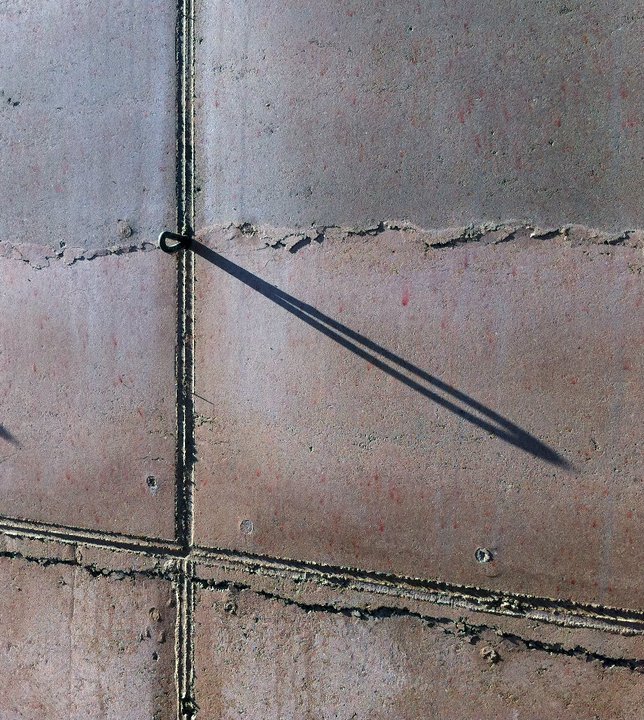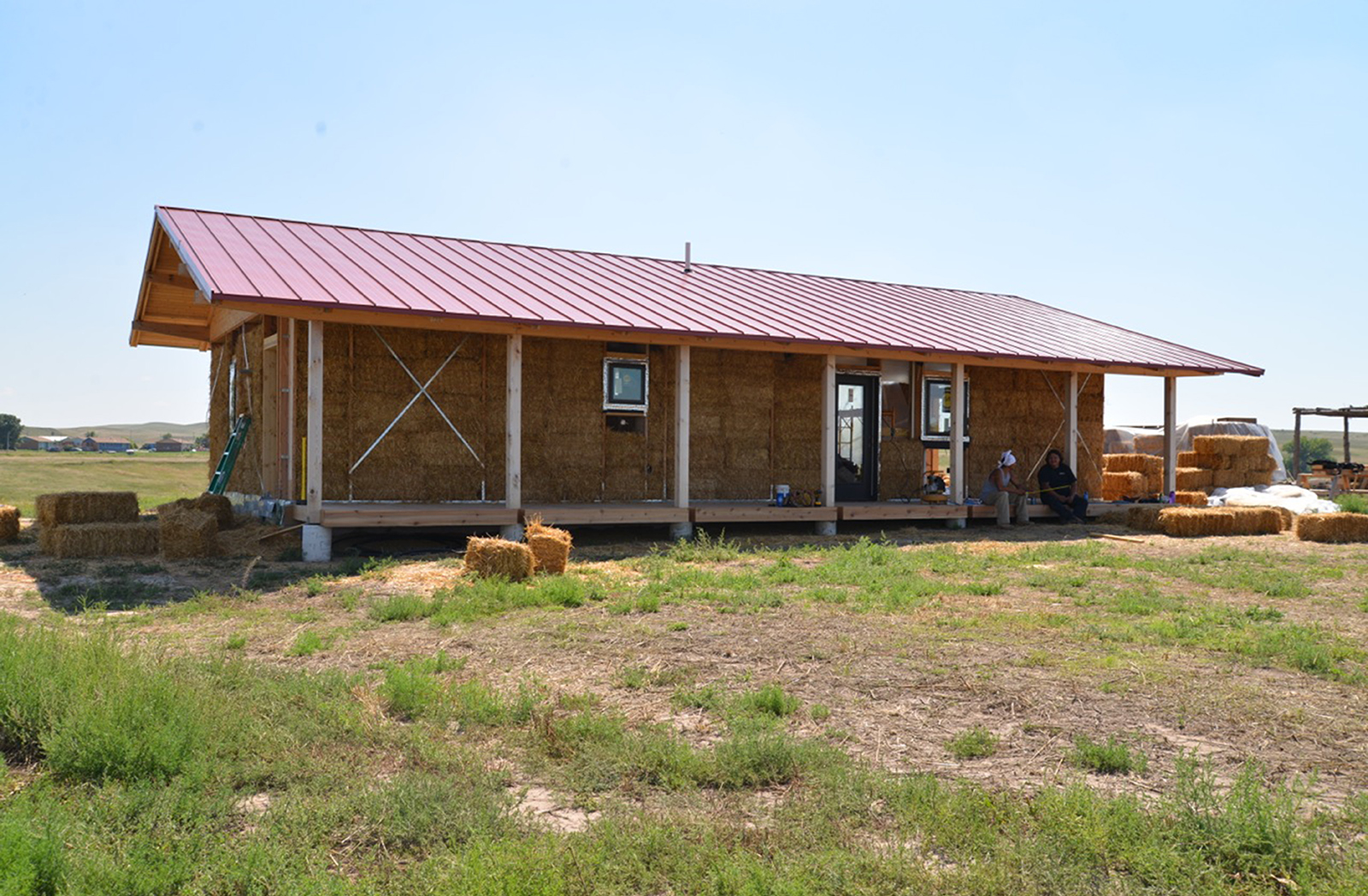Putting the Local in Global Education
Putting the Local in Global Education
Our invited chapter, Pedagogy into Practice: Teaching Environmental Design through the Native American Sustainable Housing Initiative, has been published in a new book titled: Putting the Local in Global Education: Models for Transformative Learning Through Domestic Off-Campus Programs. The position taken in this volume is that domestic off-campus study can be just as powerful a transformative learning experience as study overseas, and that domestic programs can equally expand students’ horizons, their knowledge of global issues and processes, their familiarity and experience with cultural diversity, their intercultural skills, and sense of citizenship.
The Casa Sanitas Project Published in Rammed Earth Construction: Cutting-Edge Research on Traditional and Modern Rammed Earth
The Casa Sanitas Project Published in Rammed Earth Construction: Cutting-Edge Research on Traditional and Modern Rammed Earth.
Rammed Earth Construction: Cutting-Edge Research on Traditional and Modern Rammed Earth is a collection of peer-reviewed papers presented at the First International Conference on Rammed Earth Construction (ICREC2015, University of Western Australia, Perth, Western Australia, 10-13 February 2015) by academics, engineers and rammed earth practitioners from around the world. The topics discussed in the book include:
- Construction procedures
- Durability assessment
- Material characterisation
- Seismic design
- Soil suitability
- Structural and thermal performance
- Traditional and stabilised rammed earth structures
Rammed Earth Construction: Cutting-Edge Research on Traditional and Modern Rammed Earth will be a valuable reference for academics, engineers and practitioners for describing the state-of-the-art in rammed earth research and understanding.
A High Performance Rammed Earth Wall System for Cold Climates
A High Performance Rammed Earth Wall System for Cold Climates
The Casa Sanitas project has been featured in the February issue of the Journal of the National Institute of Building Sciences (JNIBS).
Buildings are responsible for more than 40 percent of global energy used, and as much as one-third of global greenhouse gas emissions. As the cost of energy rises, and rapid urbanization increases, it has become imperative to take advantage of low-cost passive strategies to reduce the energy demand of buildings, improve the resiliency of local communities and contribute to a positive energy future.
Conceived as a sustainable alternative to the conventional wood-frame houses found across the Colorado Front Range, the Casa Sanitas prototype is designed to be a “positive energy home” (positive energy homes produce more energy over the course of a year than they use) and combines cost-effective, passive-design strategies that include the high thermal mass of stabilized rammed earth (SRE) walls, natural ventilation and passive solar orientation, with photovoltaic panels, solar thermal hot water and a small ground-source heat pump for radiant heating and cooling.
Pyatt Studio will present at The First International Conference on Rammed Earth Construction
Pyatt Studio will present the Casa Sanitas project at The First International Conference on Rammed Earth Construction.
The conference is hosted by The University of Western Australia and will bring together researchers, engineers and practitioners in order to communicate the latest developments in the design and analysis of rammed earth structures.
A two day workshop will be held at Trinity College at The University of Western Australia (UWA), aimed at communicating advances in the design and construction of rammed earth structures to engineers and practitioners.
Following the workshop, a two-day conference will be held in Margaret River, aimed at disseminating and discussing recent advances in rammed earth research. The Margaret River region is a relaxing and refreshing break from urban life which hosts the largest concentration of rammed earth buildings and structures in WA.
Secretary Castro Visits Straw-Bale Demonstration House on Pine Ridge Reservation
Secretary Castro Visits Straw-Bale Demonstration House on Pine Ridge Reservation
This past October, HUD Secretary Julián Castro visited the Pine Ridge Indian Reservation in South Dakota as part of his “listening tour,” when many of his first 100 days in office were spent learning about the needs of HUD’s constituents. The housing conditions he encountered at Pine Ridge revealed both hardship and promise.
Secretary Castro visited a 2-bedroom home shared by 13 people, but also toured a demonstration house developed by the University of Colorado Boulder Native American Sustainable Housing Initiative (NASHI), in cooperation with the Thunder Valley Community Development Corporation (CDC). Like other Sustainable Construction in Indian Country efforts you’ve read about here, NASHI is funded by HUD’s Office of Policy Development and Research (PD&R). The project also benefitted from the construction engineering and sustainable design expertise of PD&R staff.
Rob Pyatt to Serve on NEA Grant Panel
Rob Pyatt to Serve on National Endowment for the Arts Grant Panel
Rob Pyatt will serve the National Endowment for the Arts ART WORKS program as a grant panelist along with other artists and designers from across the country.
Rob Pyatt & NASHI Receive HUD Research Grant
Rob Pyatt and NASHI Receive HUD Research Grant
A University of Colorado Boulder (CU) service-learning program, funded by HUD's Office of Policy Development and Research (PD&R), is bringing stakeholders and students together to offer the Oglala Lakota Nation viable models of sustainable, energy-efficient housing. The Oglala Lakota of the Pine Ridge Indian reservation in South Dakota face some daunting odds. Located in the second poorest per capita county in the United States, the Pine Ridge reservation is also one of the largest reservations at 2.1 million acres. Recently, the executive director of the Oglala Sioux Housing Authority observed that the reservation had 1,100 houses, but needs 4,000.
Despite these challenges, Rob Pyatt, director of the Native American Sustainable Housing Initiative (NASHI), has found a resilient culture. “Lakota culture is based on the idea of sustainability, and a deep respect for the natural environment,” he said in describing the values that tribal members brought to the service-learning program Designing for People and Place: Sustainable & Affordable Housing for the Pine Ridge Indian Reservation.
Last spring, CU students and faculty in the Program in Environmental Design collaborated with the Oglala Lakota College and the South Dakota School of Mines and Technology to conduct design charrettes with Pine Ridge residents and design four homes — each featuring different construction materials and methods. The housing design emphasizes energy efficiency in sustainable materials, as an alternative to the conventional wood-frame houses found throughout Pine Ridge. The homes are designed to be net-zero energy (producing more energy over the course of a year than they use) through cost-effective passive strategies like natural ventilation and passive solar orientation combined with more expensive active renewable energy systems, such as photovoltaic panels, solar thermal hot water, and wind turbines. All four homes were designed using the LEED for Homes rating system criteria.
The first model house, a straw-bale construction, got underway this past summer. The three other models are expected to be built using structural insulated panels, optimized wood frame, and compressed earth block.
Rob Pyatt and NASHI Win the National ACSA/AIA Housing Design Education Award
Rob Pyatt and NASHI Win the National ACSA/AIA Housing Design Education Award
Congratulations to Rob Pyatt and the Native American housing Initiative for winning the 2013-2014 ACSA/AIA Housing Design Education Award, Excellence in Housing Education Course or Activity for Designing for People & Place: Sustainable & Affordable Housing for the Pine Ridge Indian Reservation. This award recognizes the importance of good education in housing design to produce architects ready for practice in a wide range of areas and able to be capable leaders and contributors to their communities. Each year, ACSA honors architectural educators for exemplary work in areas such as building design, community collaborations, scholarship, and service. The award-winning professors inspire and challenge students, contribute to the profession’s knowledge base, and extend their work beyond the borders of academy into practice and the public sector.
Pyatt Studio Featured in High Country News Magazine
Pyatt Studio Featured in High Country News Magazine
Building Better Homes in Indian Country
There's no other house like it on the Oglala Sioux's 2 million-acre Pine Ridge Reservation: Its walls are insulated by 18-inch strawbales rather than plastic sheeting, and its radiant-floor heating is much cheaper than the typical propane or electric. A frost-protected shallow foundation inhibits mold and is more energy-efficient than the damp basements common here.
Surrounded by South Dakota's open prairie, the rectangular home with its red-metal roof is one of four prototypes the local nonprofit Thunder Valley Community Development Corporation is building with South Dakota college students and the University of Colorado Boulder's Native American Sustainable Housing Initiative. Others will feature compressed-earth blocks, structural insulated panels made of plywood-faced foam, or standard wood framing.
Each is intended to help the planned 100-unit sustainable housing development meet all its energy needs on-site through rooftop solar panels, energy-storage batteries, and passive-solar design to take advantage of both sun and shade. The project won't erase the 4,000-unit housing crunch on the country's poorest reservation, but every bit counts in a place where dilapidated two-bedroom homes may shelter 15 or more people.
Building Green and Respecting Native American Identity: Housing, Culture, and Sustainability in Native American Communities
Rob Pyatt Contributes to Article in Community Investments Magazine
Building Green and Respecting Native American Identity: Housing, Culture, and Sustainability in Native American Communities
Author(s): Mike Blanford, HUD Office of Policy Development and Research; Brian Gillen, HUD Office of Public and Indian Housing; Lynda Lantz, First Pic, Inc.; Robert Pyatt, University of Colorado Boulder; and Jamie Blosser, Sustainable Native Communities Collaborative
Native American tribes have long faced challenges in providing safe, decent, and affordable housing for tribal members. Recognizing the extreme housing conditions and needs in many Native communities, the United States Department of Housing and Urban Development (HUD) is actively engaged in a number of initiatives aimed at improving conditions on the ground in Native communities across the U.S. This article details one of these efforts: Sustainable Construction in Indian Country (SCinIC), a joint program of HUD’s Office of Policy Development and Research (PD&R) and Office of Native American Programs (ONAP). The initiative seeks to promote and support sustainable construction in Native communities through demonstration, training, and dissemination of best practices and program results.
Rob Pyatt, will receive the 27th annual faculty Excellence and Equity Award
Rob Pyatt, will receive the 27th annual faculty Excellence and Equity Award from the Office of Diversity, Equity and Community Engagement at the University of Colorado Boulder tomorrow night!
This award is designed to recognize faculty who have successfully and effectively worked to promote the principles of inclusive excellence in teaching and learning, higher education program management or leadership development.






